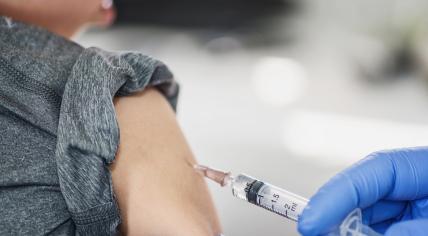
Vaccination rate among Hague kids dropped 10% since pandemic
The vaccination rate among children is dropping in all four large cities in the Netherlands, but the situation is especially worrying in The Hague. There, the vaccination rate for 12 serious infectious diseases, including mumps, measles, whooping cough, and polio, has dropped by 10 percent since 2020.
Every single Hague district is below the minimum required 90 percent vaccination rate for “herd immunity,” NOS reports based on figures from GGD Haaglanden. Measles requires a vaccination rate of 95 percent to prevent an outbreak.
In four neighborhoods - Groente- en Fruitmarkt, Transvaalskwartier, de Schildersbuurt, and the city center - the vaccination rate is only between 59 and 69 percent. In these relatively poorer neighborhoods, willingness to vaccinate has always been significantly lower. “That has always been a major concern of ours,” alderman Hilbert Bredemeijer told NOS.”
“But we are now seeing for the first time that skepticism or mistrust of vaccination has become a city-wide problem,” he added. The vaccination rate has also fallen sharply in wealthier neighborhoods like Zeehelden and Regentessekwartier. There, 75 to 77 percent of kids got vaccinated.
Bredemeijer said he is surprised that The Hague hasn’t had a disease outbreak yet with these low vaccination figures. “It seems to me just a matter of time before it happens,. Actually, with the current situation, that is a certainty to me.”
The decline in the vaccination rate for newborns and toddlers is less sharp than for 10-year-olds, but a decline is clearly visible.
The municipality and health service suspect that the social debate about the coronavirus vaccines is behind the fall in the vaccination rate. It has sown doubts about vaccines in general. “We as a society apparently no longer understand why we are doing it,” Bredemejer told NOS. “Measles is an almost forgotten disease, but it can have severe consequences, especially for small children.”
The municipality is implementing a series of measures to increase the vaccination rate. Kids can now get vaccinated at all nine locations of the Center for Youth and Family instead of only at the one in their own district. The city also wants to invest in more injection options, especially in neighborhoods where many children live.
GGD Haaglanden will also more emphatically work with key figures like imams to provide information about the importance of vaccination. Such community leaders can sometimes get through to people who refuse vaccination due to religion or distrust of the government or science.
Bredemeijer thinks the measures will help but added that this problem is changing and complicated. “New groups have now emerged. These include people who are highly educated, interpret the science themselves, and then think they know better. How are we supposed to convince them?”
He called on the national government to launch a public campaign. “This is happening throughout the country. We have to explain to everyone again how much vaccinations have meant for our health since the introduction of the National Vaccination Program in 1957. Diseases like polio and measles have disappeared from the streets.”
